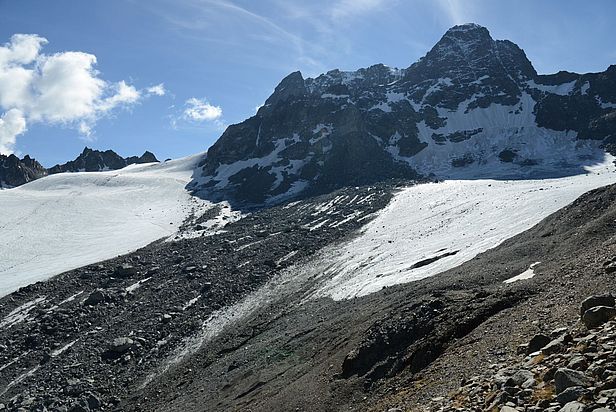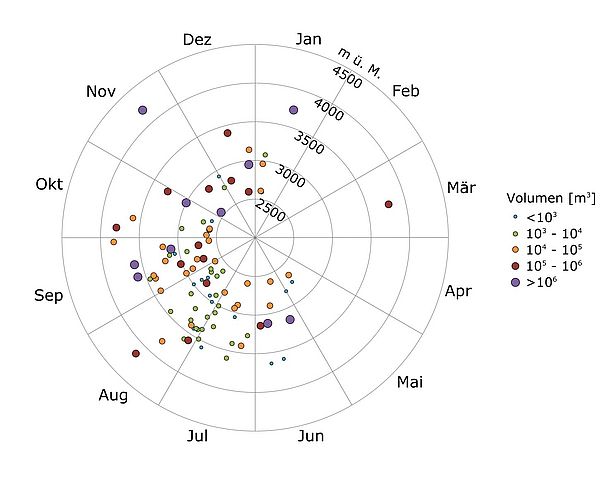We address the effects of permafrost on rock slope failures in high alpine regions in the light of climate change.
A rock slope failure is the culmination of a destabilisation process spanning thousands of years in some cases and driven by a multitude of factors. Permafrost is one of these factors. With regard to rock wall stability, it manifests highly contradictory characteristics. On the one hand it exerts a stabilising influence and can actually prevent the collapse of unstable rock formations. It also restricts the severity of destructive processes, such as freeze-thaw cycles and the penetration of water deep into the rock. At the same time, however, permafrost can also amplify the destabilising influence of other factors, as outlined below.
Permafrost facilitates the freezing or cryostatic pressure arising from ice segregation, for example. Permafrost ice prevents water from running off into fissures and, when the rock surface refreezes, allows a freezing front to form around the water, which in turn facilitates frost wedging. The effect of thermomechanical processes is also amplified in permafrost because vein ice has a significantly higher expansion coefficient than the rock itself. Permafrost therefore serves as a catalyst for the formation of rock fissures while at the same time preventing movements of rock masses. As soon as the permafrost becomes warmer or disappears, however, the latent instabilities take effect. Such conditions occur as a consequence of climate change, which is not only triggering an increase in average temperatures and extreme heat events, but also bringing about an upturn in the incidence of heavy precipitation in high alpine regions. This is clearly illustrated by the SLF rockfall database, which shows that rock slope failures occur most frequently when rock temperatures reach their annual peak and in altitude zones where warm permafrost exists (Fig. 1).
Glaciers and heavy precipitation
Glaciers and heavy precipitation are two other factors which, alongside their ability to destroy rock walls, can reinforce this warming of the permafrost. The exposure of formerly glaciated rockwalls can give rise to an imbalance in the permafrost and negate its stabilising influence. Heavy rainfall introduces large amounts of lateral energy into a permafrost rockwall and can give rise to warming of the vein ice.
Permafrost is only a thermal state and, as such, is hardly capable of triggering rock slope failures, but it does have a regulating function. It can reinforce and attenuate destructive processes, and sustain and activate instabilities. In the current phase of permafrost warming and degeneration, it is old, latent instabilities in particular that are being activated. At the same time, relatively deep-lying active layers allow freeze-thaw cycles and precipitated water to have a more far-reaching effect. For as long as changes in the permafrost persist, much more frequent rock slope failure events are therefore to be expected.

